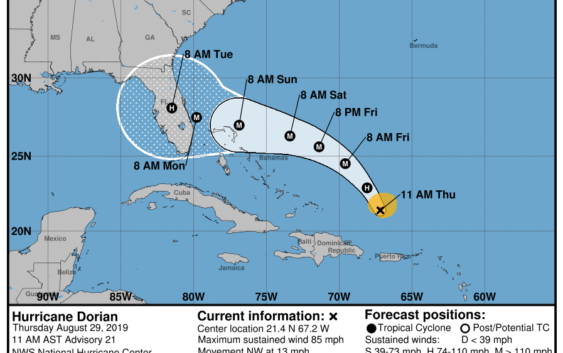- Hill Country flooding death toll rises to 32 as search continues for missing girls, other survivors
- Tropical Storm Chantal expected to make landfall overnight in coastal South Carolina
- Severe weather, flooding forces MLS to postpone Austin FC vs. LAFC match at Q2 Stadium
- Hill Country flooding: Here’s how to give and receive help
- LCRA advises caution on lakes amid Central Texas flooding
Tracking Dorian: Most, least likely scenarios for hurricane's path

The Category 1 hurricane sustained wind speeds of 80 miles per hour as it passed Puerto Rico and the Virgin Islands, causing limited damage.
Yet forecasters are predicting several scenarios as the storm grows in size and intensity, with the “best case scenario” seeming like the least likely scenario.
MOST LIKELY SCENARIO:
The storm is moving toward the U.S. mainland, and will most likely make landfall along Florida’s east coast. Forecasters say the storm could be a Category 4 storm by the time it reaches the state.
Since 1900, eight Category 4 and 5 hurricanes have made landfall along the east coast of Florida. The most recent was 1992’s Hurricane Andrew, which had maximum wind speeds of 165 miles per hour.
This scenario includes tracks farther north toward Georgia or even south over the Florida Keys.
LEAST LIKELY SCENARIO:
Dorian will be pulled northward and remain in the Atlantic Ocean, without making landfall.
ANOTHER POSSIBILITY:
Dorian makes landfall in south Florida and then enters the Gulf of Mexico, with a potential second landfall in the Gulf Coast. This would affect Louisiana, Alabama, and/or Mississippi.
The variety of forecast scenarios is depicted in the National Hurricane Center’s “spaghetti plot,” which shows various computer models with variances that make the picture look like a plate of spaghetti.
Copyright © 2019 WTVD-TV. All Rights Reserved.